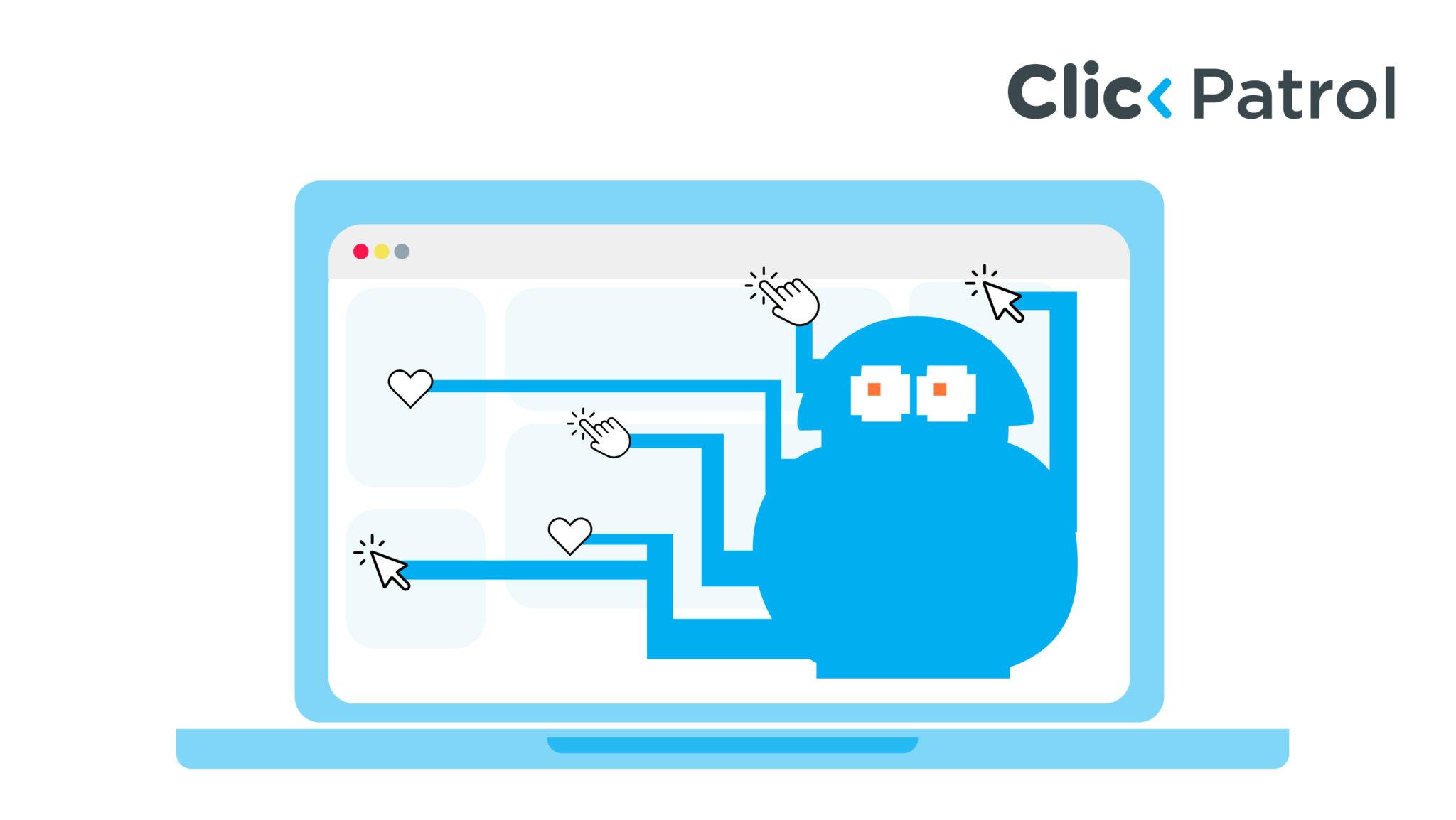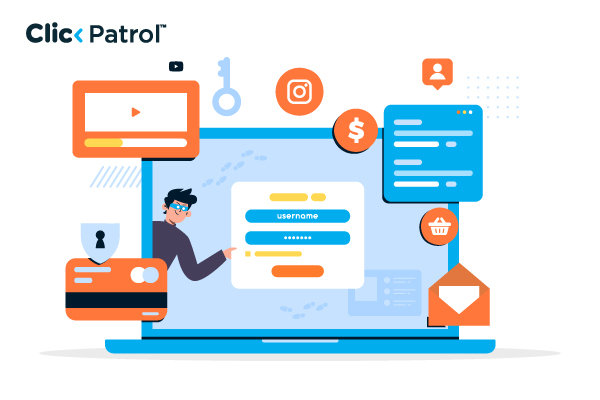
Affiliate click fraud protection in 2025: How to detect and stop fraud to safeguard ROI
Abisola Tanzako | Sep 25, 2025

Table of Contents
- Affiliate click fraud: Definition and risks
- Common sources of click fraud
- Why affiliate click fraud protection matters in 2025
- Signs you are experiencing click fraud
- 1. High click-through rates with low conversion:
- 2. Uncommon geographic traffic:
- 3. Strange device/browser patterns:
- 4. Short session times:
- 5. Multiple IP addresses:
- How click fraud affects affiliates and advertisers
- Case study of Shawn Hogan and the $28M eBay affiliate fraud
- Affiliate click fraud protection strategies
- 1. Use affiliate fraud detection tools
- 2. Put traffic sources under scrutiny
- 3. Use IP blacklists and whitelists
- 4. Use CAPTCHA verification
- 5. Use smartlink tracking
- Step-by-step guide to preventing click fraud as an affiliate
- Step 1: Choose a reliable affiliate network
- Step 2: Use click tracking tools
- Step 3: Identify red flags
- Step 4: Install click fraud protection software
- Step 5: Include geo and IP filters
- Step 6: Add CAPTCHA on landing pages
- Step 7: Manage Ad visibility
- Step 8: Check affiliate referrals
- Step 9: Report and deactivate fraudulent traffic
- Step 10: Stay current
- Top affiliate click fraud protection tools
- Best practices for affiliates to prevent click fraud
- 1. Avoid low-quality traffic sources:
- 2. Collaborate with trusted advertisers:
- 3. Implement UTM parameters:
- 4. Activate frequency caps:
- 5. Train your team:
- The role of AI in click fraud protection
- Future of affiliate click fraud protection
- 1. Click prediction simulation:
- 2. Instant bot blocking:
- 3. Unusual user path detection:
- 4. Staying current with affiliate program rules:
- Protect profits, block click fraud
- FAQs
17% of affiliate traffic in 2022 comprised click fraud worth around $3.4 billion in losses for companies worldwide.
Affiliate marketing is the most profitable online marketing medium, generating over $17 billion globally in 2023 and growing annually.
Brands use affiliates to drive traffic, leads, and sales, and the affiliates earn money through the promotion of products.
However, a severe problem exists in the industry: click fraud and other forms of fraud.
This article explains what click fraud is in affiliate marketing, how it impacts affiliates and advertisers, real-world fraud cases, and the top prevention strategies and tools to protect profits in 2025.
Affiliate click fraud: Definition and risks
Click fraud is the unauthorized or artificial generation of clicks on affiliate links or advertisements.
Instead of real potential clients engaging with your link, bots, scripts, or bad actors construct these clicks to:
- Artificially inflate click-through rates (CTR)
- Consume ad budgets for advertisers
- Illegitimately increase affiliate commissions
- Interrupt competitor campaigns
Common sources of click fraud
Here are the common sources of click fraud:
- Click bots: Automated programs designed to click on affiliate links repeatedly.
- Click farms: Many low-paid workers are hired to generate fake clicks.
- Competitors: Affiliates or businesses that click your ads to sabotage your performance.
- Malware: Viruses installed on devices that drive clicks without users’ consent.
- Incentivized traffic: Users clicking links for an incentive instead of interest.
Why affiliate click fraud protection matters in 2025
Click fraud may appear harmless at first glance, but its long-term impact can severely damage your affiliate business.
1. Abused Ad spend
Click fraud drains ad spend with paid clicks that never convert.
2. Contaminated analytics
Click fraud skews CTR, bounce rate, and conversions, distorting campaign performance.
3. Affiliate penalties
Networks like Amazon Associates or CJ Affiliate monitor traffic quality.
Too much click fraud can get your account suspended or banned.
4. Loss of trust
Low-quality traffic erodes trust and harms long-term affiliate relationships.
5. Lower ROI
Fraudulent clicks cut ROI, while protection ensures you pay only for real traffic.
Signs you are experiencing click fraud
Capturing click fraud early is crucial.
The following are indications to watch for:
1. High click-through rates with low conversion:
One of the most critical indicators of non-human behavior.
2. Uncommon geographic traffic:
Traffic from regions you do not serve.
3. Strange device/browser patterns:
Excessive clicks from the same device type or outdated browsers.
4. Short session times:
Users are leaving within a few seconds of clicking.
5. Multiple IP addresses:
The same IP address is clicking multiple times.
How click fraud affects affiliates and advertisers
It includes:
1. For affiliates
- Loss of commission due to fake traffic
- Risk of getting kicked out of affiliate programs
- Waste of time and energy spent advertising offers
2. For advertisers
- Drain of the budget without making sales
- Misleading campaign data leading to poor decisions
- Reduced ROI and profitability
Case study of Shawn Hogan and the $28M eBay affiliate fraud
Shawn Hogan, founder of Digital Point Solutions, ran a cookie-stuffing scheme that secretly placed eBay cookies on users’ browsers, earning him fraudulent commissions.
From the mid-2000s to 2007, he made over $28M before an FBI probe led to his 2010 indictment.
In 2014, he was sentenced to five months in prison, three years’ probation, and a $25,000 fine.
The case is a landmark example of large-scale affiliate click fraud.
Affiliate click fraud protection strategies
Click fraud protection works best with a multi-layered system.
Here are the top strategies:
1. Use affiliate fraud detection tools
Software like ClickPatrol, PPC Protect, and Fraudlogix filter out bots and click fraud in real-time.
2. Put traffic sources under scrutiny
Always check where your clicks are coming from.
Use Google Analytics or affiliate dashboards to spot erratic trends.
3. Use IP blacklists and whitelists
Block regular fake IPs and allow only known traffic sources.
4. Use CAPTCHA verification
CAPTCHAs stop bot traffic since it only allows real human beings to click on links.
5. Use smartlink tracking
Smartlinks monitors traffic and delivers only top-quality clicks to advertisers, reducing the risk of fraud.
Step-by-step guide to preventing click fraud as an affiliate
The steps include:
Step 1: Choose a reliable affiliate network
Choose websites that have built-in fraud protection (i.e., Impact, ShareASale).
It is simpler to watch and ensures that you are safe with professional monitoring.
Step 2: Use click tracking tools
Use platforms like Voluum or ClickMagick to track each click.
These allow you to track traffic sources, IPs, and conversion rates.
Step 3: Identify red flags
Check for trends like:
- Extremely high click traffic with very low conversion traffic
- Same IP repeat clicking
- Irrelevant region click traffic
Step 4: Install click fraud protection software
Install software that automatically deletes bots and suspicious traffic. Making it easier to defend and keep your campaigns clean.
Step 5: Include geo and IP filters
Limit traffic to your target user base by blocking suspicious IP blocks or areas.
Allowing you to control who engages with your links.
Step 6: Add CAPTCHA on landing pages
CAPTCHAs verify human traffic and deters machine traffic. It is a lightweight, host-yourself approach to protecting your site.
Step 7: Manage Ad visibility
Enforce daily budgets and frequency caps to prevent single-user repeated clicks.
This ensures your campaigns run smoothly and fraud-free.
Step 8: Check affiliate referrals
Look at how your sub-affiliates are sending your links.
Ban unwanted traffic sources like pop-ups or forced redirects.
Step 9: Report and deactivate fraudulent traffic
Report fraudulent traffic to your network and request audits or refunds.
Step 10: Stay current
Stay current with affiliate forums and newsletters to learn about new scam schemes.
Top affiliate click fraud protection tools
Here are some popular tools affiliates and advertisers use to fight click fraud:
1. ClickPatrol: Detects and blocks click fraud on PPC and affiliate campaigns.
2. TrafficGuard: Provides AI-powered click fraud prevention.
3. CHEQ Essentials: Protects campaigns from bots and invalid traffic.
Best practices for affiliates to prevent click fraud
Below are the best practices for affiliates to prevent click fraud.
1. Avoid low-quality traffic sources:
Never buy cheap traffic from untrusted providers.
2. Collaborate with trusted advertisers:
Require advertisers to apply fraud prevention on their end.
3. Implement UTM parameters:
Track campaign performance by tagging links appropriately.
4. Activate frequency caps:
Impose a threshold on the number of clicks coming from the same user.
5. Train your team:
Train team members on how to identify fake traffic.
The role of AI in click fraud protection
Artificial Intelligence (AI) has transformed the detection of click fraud in affiliate marketing.
AI-based tools analyze massive amounts of data in real-time, detecting patterns that human monitoring cannot.
AI helps by:
- Predicting click fraud behavior
- Blocking bots instantly
- Identifying abnormal user journeys
- Ensuring compliance with affiliate program rules
Future of affiliate click fraud protection
Artificial Intelligence (AI) has moved click fraud detection by affiliates to the next level by surpassing traditional monitoring methods.
AI software can scan enormous volumes of traffic data in real-time, as opposed to manual audits or rule-based systems, and select out hidden anomalies that would go unnoticed by human eyes.
AI helps by:
1. Click prediction simulation:
AI scans click patterns and device data to spot and stop fake clicks fast.
2. Instant bot blocking:
AI fraud tools block bots in milliseconds by spotting rapid, identical, or suspicious clicks.
3. Unusual user path detection:
AI flags unusual paths, like rapid link-hopping or repeated visits without interaction.
In that case, AI notifies and flushes out such wasteful traffic.
4. Staying current with affiliate program rules:
AI filters fake clicks, protecting affiliates from lost commissions or suspension.
Protect profits, block click fraud
Click fraud protection is no longer optional; it is essential for affiliate marketing success.
With billions lost to click fraud every year, ignoring the problem means wasted ad spend, reputational damage, and even lifetime bans from top networks.
The good news is that click fraud can be detected and stopped.
With fraud detection tools, traffic monitoring, AI-driven safeguards, and innovative best practices, affiliates can protect campaigns, maximize ROI, and earn the trust of networks and advertisers.
Scammers will not stop evolving, so staying proactive is the only way forward.
If you want your affiliate business to grow, make click protection a priority today, because every real click counts.
FAQs
Q. 1 What is affiliate click fraud?
Affiliate click fraud refers to fake clicks from bots or bad actors, rather than real customers.
Q. 2 In what ways does click fraud harm affiliates and advertisers?
Click fraud drains budgets, skews analytics, lowers ROI, and can get affiliates banned.
Q. 3 What are common signs of click fraud?
Red flags include high CTR with low conversions, odd traffic sources, repeat IPs, and very short sessions.





